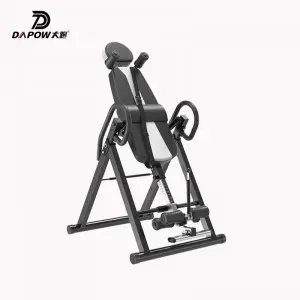Handstands, as a popular form of physical exercise, have attracted increasing attention in recent years. It brings a unique physiological experience by changing body posture, but the way it is achieved is significantly different – either with the assistance of a handstand or by relying entirely on one’s own strength to complete a bare-handed handstand. Both methods have their own characteristics. Only by choosing the one that suits you can you enjoy the benefits of handstands safely.
The core advantage of the handstand lies in lowering the entry threshold. It supports the body through a stable bracket structure, allowing users to easily achieve an inverted posture without having strong upper limb strength or a sense of balance. For those who are trying handstands for the first time, this method can effectively reduce the pressure on the neck and shoulders and prevent muscle strains caused by improper control. In addition, the handstand is usually equipped with an Angle adjustment function, allowing the body to gradually transition from a tilted Angle to a vertical handstand, giving the body sufficient time to adapt to the change in posture. This progressive practice rhythm is very friendly to beginners.
From the perspective of practice scenarios, the handstand is more suitable for self-training in a home environment. It doesn’t require additional auxiliary tools and there’s no need to worry about the stability of supports such as walls. Users can practice for short periods at any time, which is especially suitable for relaxation during work breaks or body adjustment before going to bed. For those who are older, have mild joint discomfort, or need to do light handstand training during the recovery period, the stability and controllability provided by the handstand are undoubtedly a more reliable choice.
Handstands without equipment are a comprehensive test of one’s physical abilities. It requires practitioners to have sufficient core strength, shoulder stability and body coordination in order to maintain balance without support. The advantage of this method lies in the fact that it is not restricted by the venue. Once mastered, it can be practiced on any place with a flat ground. More importantly, during the process of handstands without equipment, the body needs to continuously engage multiple muscle groups to maintain the posture. Long-term practice can significantly enhance the control ability and coordination of all the muscles in the body.
But the challenge of handstands without equipment is also obvious. Beginners often need weeks or even months of basic training to complete a standard wall handstand, and during the process, they are prone to body swaying due to insufficient strength, increasing the burden on their wrists and shoulders. In addition, handstands without equipment place higher demands on the mental state of the practitioners. Fear of balance may affect the accuracy of the movements, which requires a longer period of psychological adaptation and technical refinement.
Which way to choose is essentially a consideration of one’s own physical condition and practice goals. If your primary need is to easily experience the effect of handstands or to gradually improve your body’s adaptability under the premise of safety, a handstand would be a more efficient choice. It can help you bypass technical barriers, directly enjoy the physical sensation brought by handstands, and at the same time reduce the risk of injury.
If your pursuit is to comprehensively enhance your physical fitness, be willing to invest time in systematic training, and enjoy the process of challenging your body’s limits, handstands without equipment might better meet your expectations. It is not only a form of exercise but also a tempering of willpower. When you can independently complete a stable handstand, the sense of achievement you gain will be even stronger.
It is worth noting that the two approaches are not completely opposed. Many people start with a handstand. After getting used to the handstand posture, they gradually transition to bare-handed practice. With the physical foundation laid by the equipment, their subsequent technical improvement becomes smoother. No matter which method is chosen, maintaining a moderate practice frequency, paying attention to the signals sent by the body, and avoiding overtraining are the keys to enjoying the benefits of handstands in the long term. After all, the best way to exercise is the one that suits you.
Post time: Sep-12-2025



